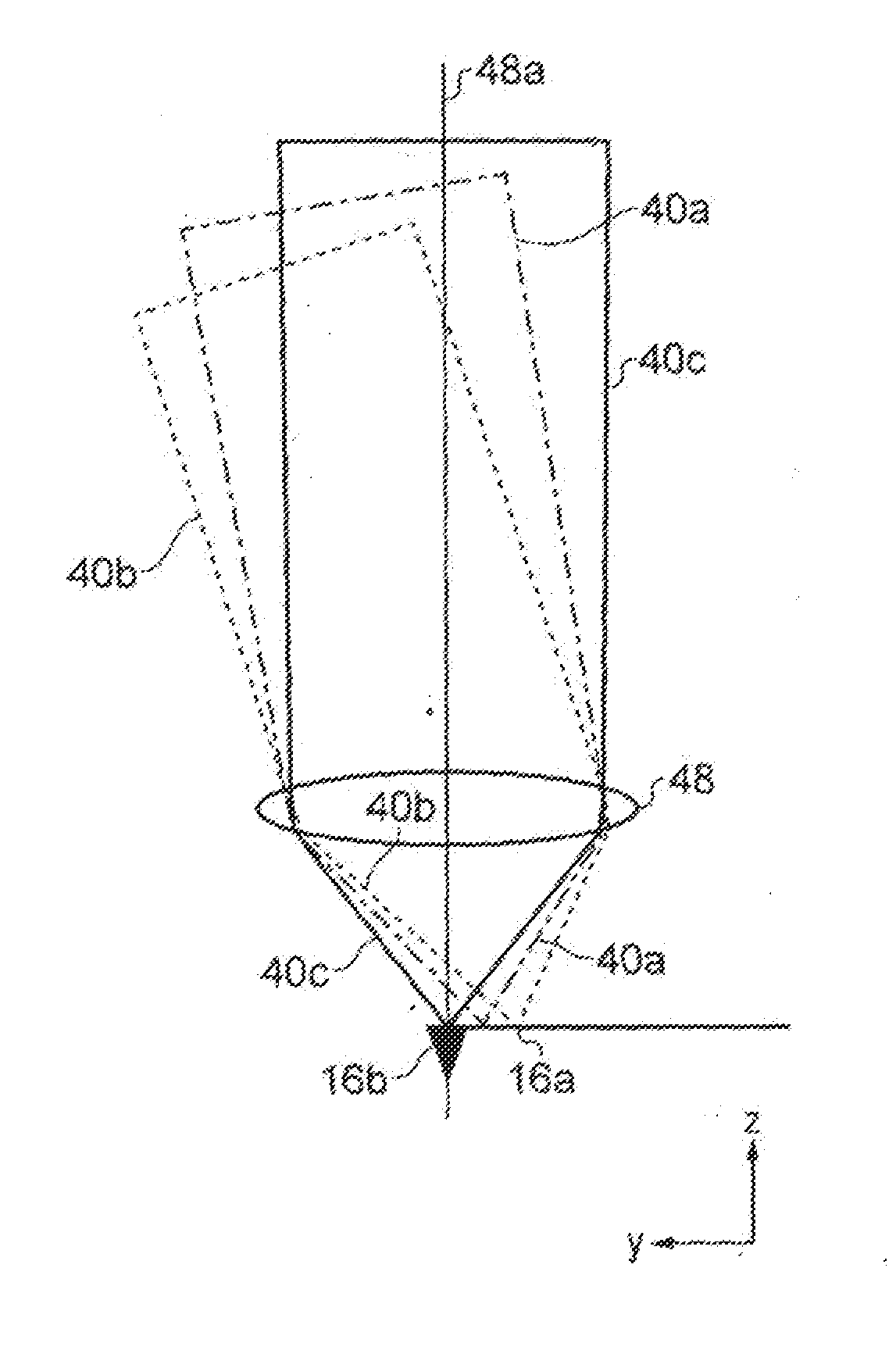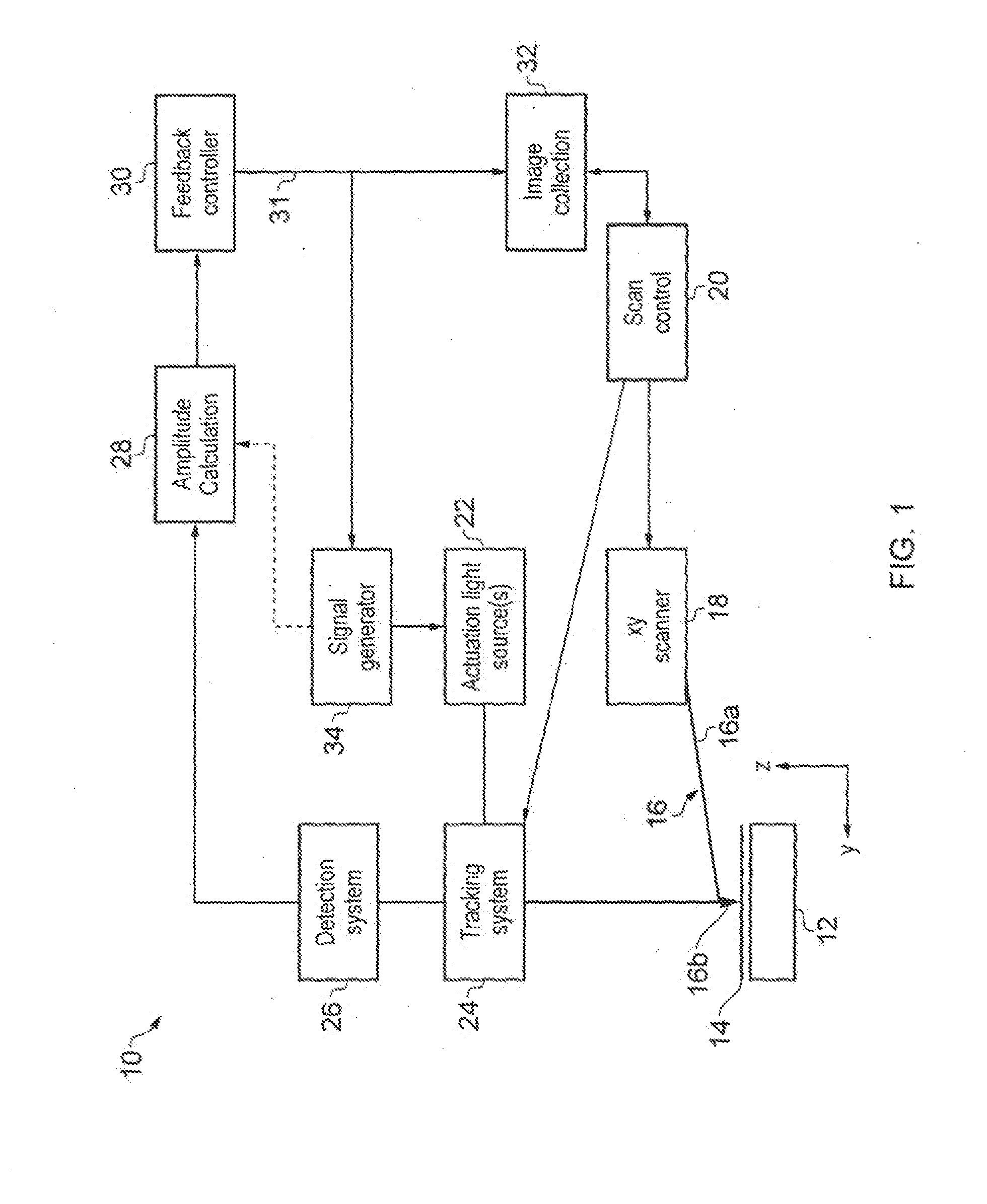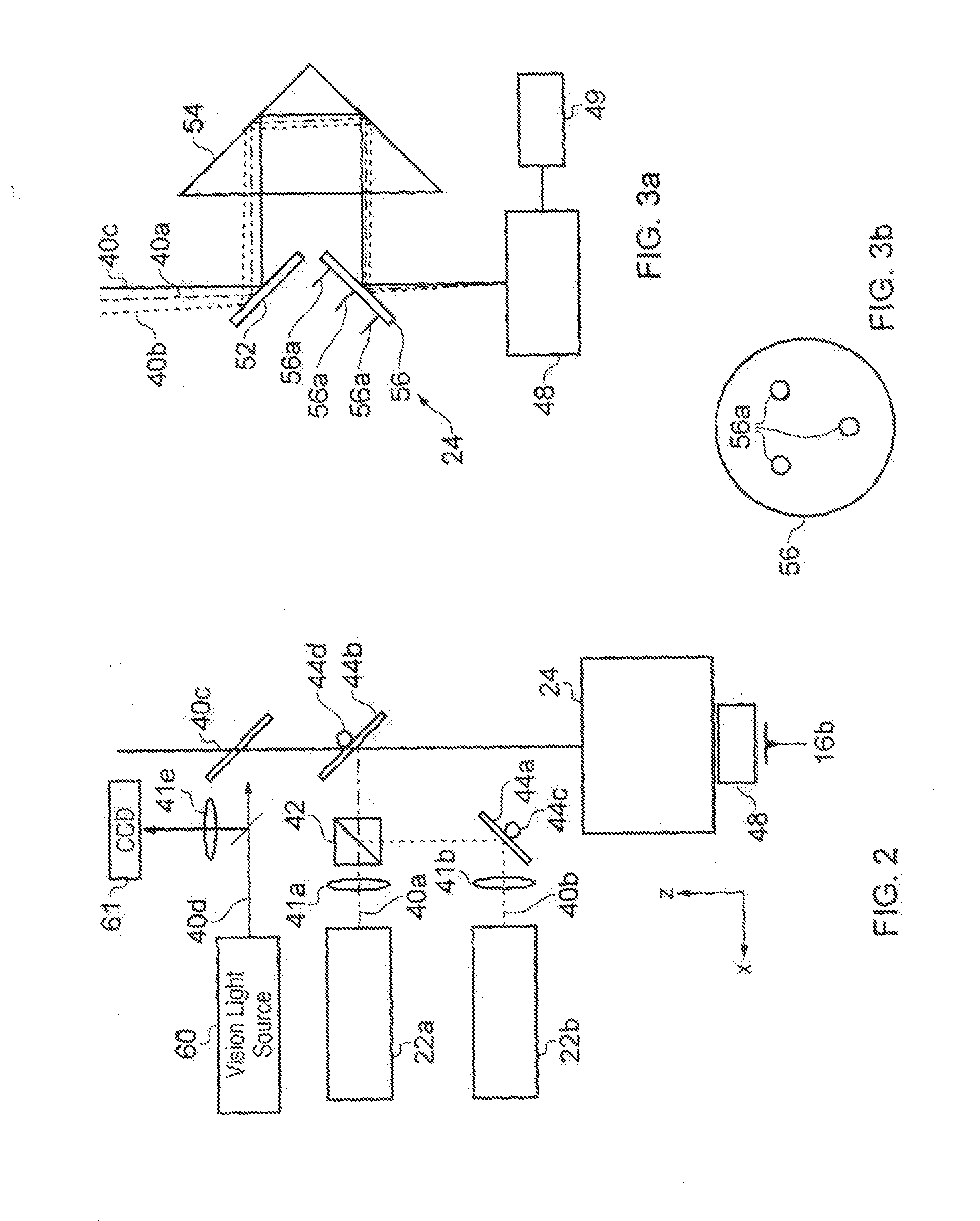Probe actuation
a technology of scanning probe and actuation, which is applied in the direction of scanning probe techniques, nanotechnology, instruments, etc., can solve the problems of difficult control of the bending of the probe accurately and with a large range of motion, and achieve the effect of increasing the power, intensity and modulation bandwidth of the probe illumination, and optimizing the
- Summary
- Abstract
- Description
- Claims
- Application Information
AI Technical Summary
Benefits of technology
Problems solved by technology
Method used
Image
Examples
Embodiment Construction
)
[0049]With reference to FIG. 1, a novel microscope 10 that incorporates an embodiment of a z actuation system in accordance with the present invention is shown. The microscope 10 comprises a stage 12 on which a sample 14 to be investigated by a probe 16 is mounted. The probe 16 comprises a cantilever beam 16a and a tip 16b, which tapers to a fine point, and which is located towards a distal end of the cantilever beam. The other (proximal) end of the cantilever beam is fixed to a mount. The mount and probe 16 are connected to piezoelectric xy drivers 18 that are operable by a scan controller 20 to move the probe 16 across the sample surface in the plane (x,y) of the sample 14.
[0050]The cantilever 16a is of a type referred to as a thermal bimorph. That is, it is composed of two (or more) materials, with differing thermal expansions. Typically, this will be a silicon or silicon nitride base with a gold or aluminium coating. The coating extends the length of the cantilever 16a and cove...
PUM
 Login to View More
Login to View More Abstract
Description
Claims
Application Information
 Login to View More
Login to View More - R&D
- Intellectual Property
- Life Sciences
- Materials
- Tech Scout
- Unparalleled Data Quality
- Higher Quality Content
- 60% Fewer Hallucinations
Browse by: Latest US Patents, China's latest patents, Technical Efficacy Thesaurus, Application Domain, Technology Topic, Popular Technical Reports.
© 2025 PatSnap. All rights reserved.Legal|Privacy policy|Modern Slavery Act Transparency Statement|Sitemap|About US| Contact US: help@patsnap.com



